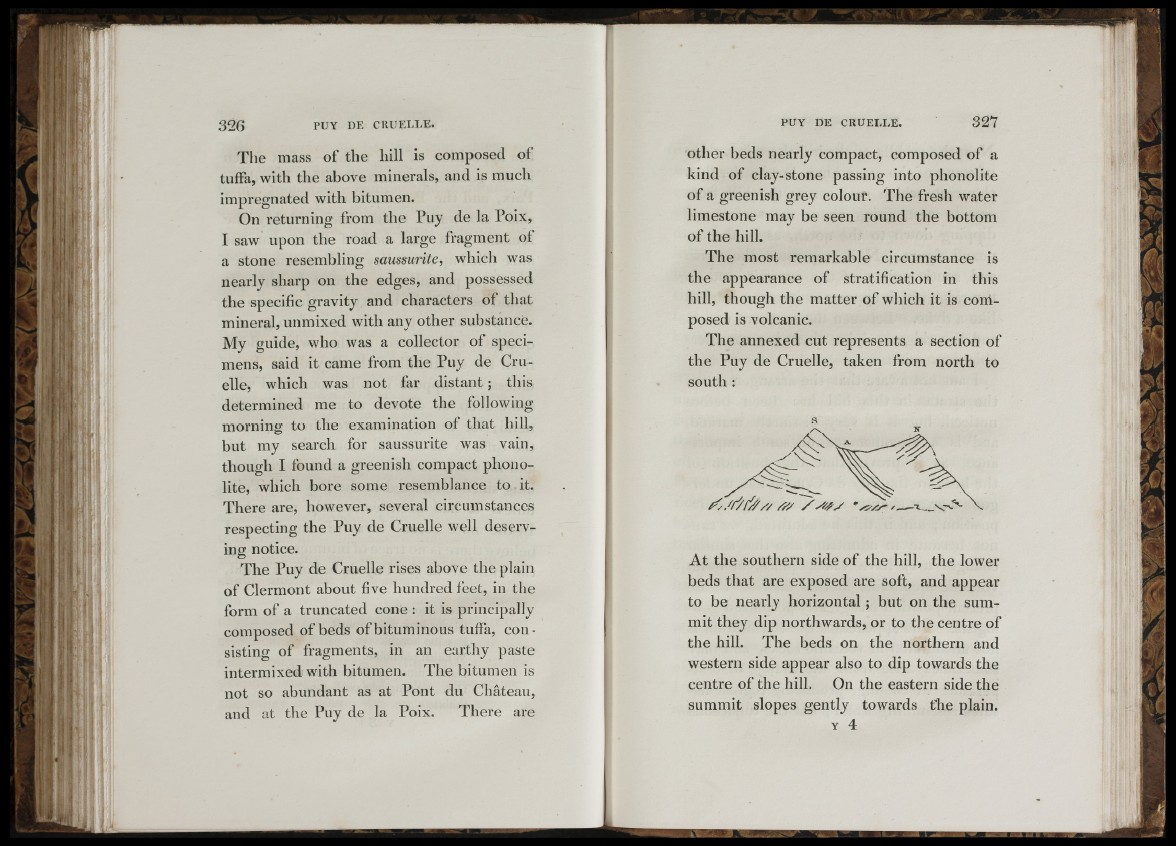
,
Iil
1^
.Fiii'"
’fi; Il
! i
h '
ili
-sit lintn
MiJl
The mass of the hill is composed of
tuffa, with the above minerals, and is much
impregnated with bitumen.
On returning from the Puy de la Poix,
I saw upon the road a large fragment oi
a stone resembling saussurite, which was
nearly sharp on the edges, and possessed
the specific gravity and characters of that
mineral, unmixed with any other substance.
My guide, who was a collector of specimens,
said it came from the Puy de Cruelle,
which was not far distant ; this
determined me to devote the following
morning to the examination of that hill,
but my search for saussurite was vain,
though I found a greenish compact phonolite,
which bore some resemblance to it.
There are, however, several circumstances
respecting the Puy de Cruelle well deserving
notice.
The Puy de Cruelle rises above the plain
of Clermont about five hundred feet, in the
form of a truncated cone : it is principally
composed of beds of bituminous tuffa, co n sisting
of fragments, in an earthy paste
intermixed with bitumen. The bitumen is
not so abundant as at Pont du Chateau,
and at the Puy de la Poix. There are
other beds nearly compact, composed of a
kind of clay-stone passing into phonolite
o f a greenish grey colour. The fresh water
limestone may be seen round the bottom
of the hill.
The most remarkable circumstance is
the appearance of stratification in this
hill, though the matter of which it is composed
is volcanic.
The annexed cut represents a section of
the Puy de Cruelle, taken from north to
south :
V// "
At the southern side of the hill, the lower
beds that are exposed are soft, and appear
to be nearly h o rizo n tal; but on the summit
they dip northwards, or to the centre of
the hill. The beds on the northern and
western side appear also to dip towards the
centre of the hill. On the eastern side the
summit slopes gently towards fhe plain.
Y 4
- I* 'hi
1 3 •
Fi